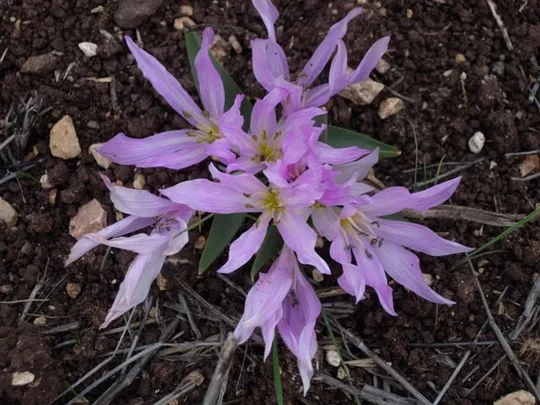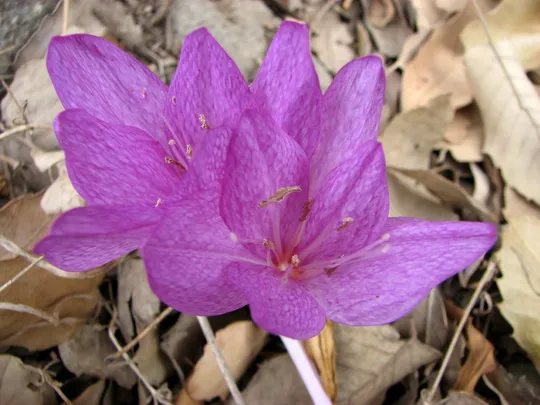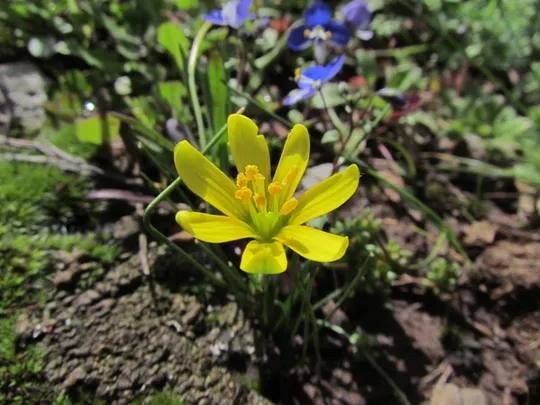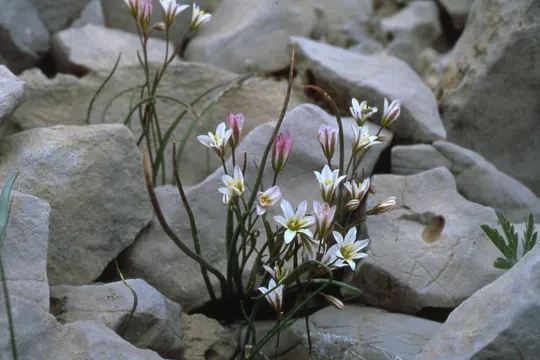Colchicum aff. antilibanoticum
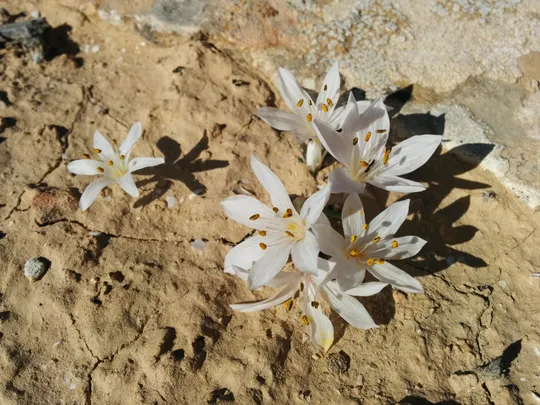
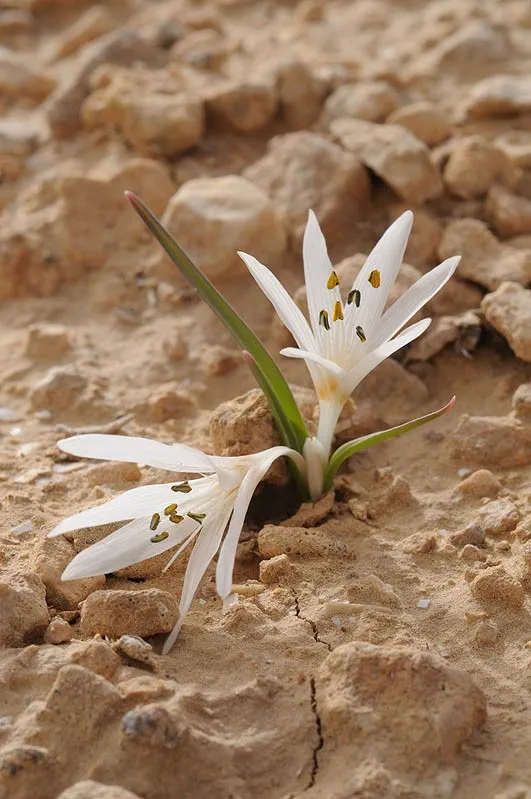
Colchicum aff. antilibanoticum grows only
in the Negev Highlands, at 9 documented sites, but there may be 15 or more
sites. All of the sites are located at altitudes above 900 m: in the vicinity
of the Lots Cisterns, at Wadi Elot, Upper Wadi
Lots, Wadi Eli'av, Mount Sagi, upper Wadi Nitsana and Mount Nafha. Oz Golan recently
found the species west of Hemet pit and on Mount Ramon. The populations of the Wadi Elot branch found in the
parking area of the Lots Cisterns have been thoroughly and quantitatively
studied: they include 35 clumps and 42 plants.
Rocky limestone slopes in the high Negev Highlands. It
is commonly found together with Artemisia sieberi and Astragalus
bethlehemiticus on slopes, in rock crevices and in loess gullies of large
wadis (order 3-5). Its optimal microhabitats are small loess patches at the
base of slopes or depressions located in small gullies that cut into the
slopes, where Carex pachystylis dominates. Perhaps the absence of Colchicum aff. antilibanoticum from
loess patches in large gullies is a result of their consumption by porcupines or possibly due to a competitive disadvantage
or harm by floods.
Colchicum aff. antilibanoticum belongs to a
special group of Colchicum (Hermodactylus,
R. Brown) whose flowers have nectaries shaped like fringed cups at the base of the stamen filaments (Feinbrun,
1953). This group includes C. tuviae
and C. guessfeldtianum
and a new species from Edom
that has not yet been published. C. ritchii and C.
schimperi also have fringed
cups, but they probably belong to another section where the three leaves appear
at the same time as the flowers. C. aff. antilibanoticum
is close to C. tuviae that is endemic to the transition zone scrubland
and to the northern Negev and differs from it by the absence of the fringed
cup-like nectaries. Moreover, C. tuviae has hairy or hairless leaves whereas
in C. aff. antilibanoticum the leaves are always glabrous, its flowers are
smaller and have one style (and not 3). Another closely related species to C.
aff. antilibanoticum is C. antilibanoticum that flowers on
the high Hermon in the autumn with no leaves.
Colchicum aff. antilibanoticum grows in only in the Negev Highlands in Israel, and there is not
enough information on long-term trends regarding the numbers of sites and population
sizes. Porcupines, which destroy many types of geophytes in the Negev Highlands,
are the main threat to the species. They dig and uproot tubers and bulbs,
leaving behind only the skins. C. aff. antilibanoticum is protected in Israel in the Negev Highlands Nature Reserve. As the species
is endemic to Israel, its local threat status is equivalent to its global
status.
Thorough surveys should be conducted in early January in the
High Negev Highlands to find additional populations. Protective measures should
be implemented against porcupines,
e.g. spreading protective metal nets.
Colchicum aff. antilibanoticum is a new
species to science, endemic to the Negev Highlands. However, more research is
needed to examine the relation to C.
guessfeldtianum populations in northern Sinai and to
related Colchicum species from Southern Jordan.
Colchicum aff. antilibanoticum is a rare geophyte endemic to the Negev Highlands and new to science.
It has a unique character for the genus – a single style instead of three. Porcupines
feeding on tubers threaten the population. Additional surveys are required for
a reliable and up-to-date assessment the situation. Its local threat status is equivalent
to its global status.
Feinbrun, N. 1953, The Genus chicum of Palestine and neighbng countries. Palestine J. of Botany, Jerusalem series, 6, pp:
71-95.
Current Occupancy Map
| 1000 squre meter pixel | 5000 squre meter pixel | 10000 squre meter pixel | |
|---|---|---|---|
| number of observations | 0 | 0 | 0 |
| in total pixels | 0 | 0 | 0 |
| Family | Liliaceae |
| Classification | On the endangered species list |
| Ecosystem | Desert Mountains |
| Chorotype | Western Irano-Turanian |
| Conservation Site | Branch of Wadi Elot near Lots Cisternss |
| Rarity |
1
2
6
|
|---|---|
| Vulnerability |
0
0
4
|
| Attractiveness |
0
2
4
|
| Endemism |
0
4
4
|
| Red number |
1
4.2
10
|
| Peripherality | 0 |
| IUCN category | DD EW EX LC CR EN VU NT |
| Threat Definition according to the red book | Endangered |
 Based on:
Based on:
